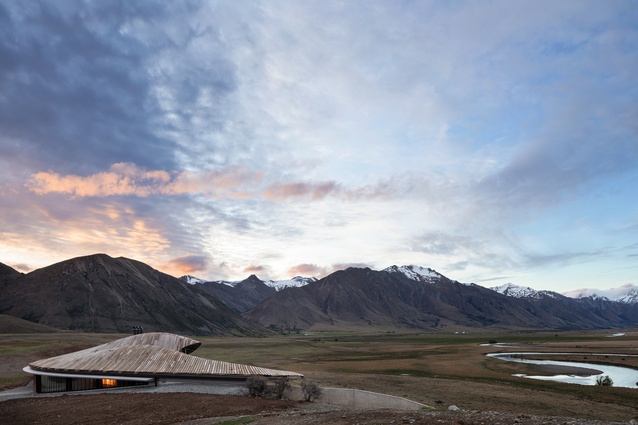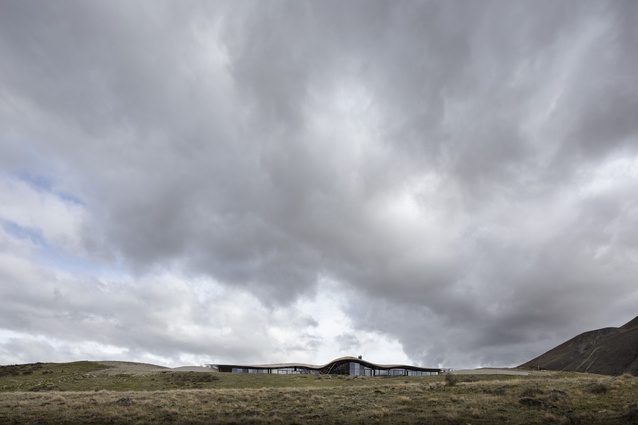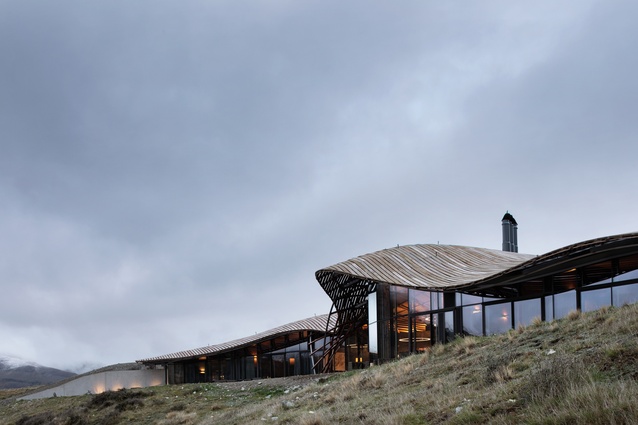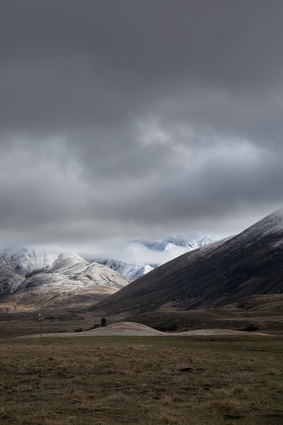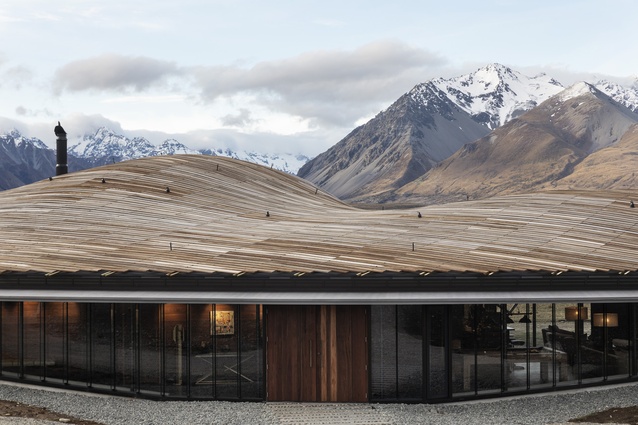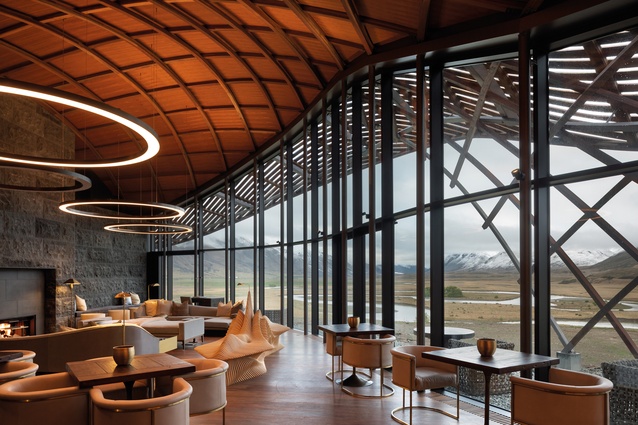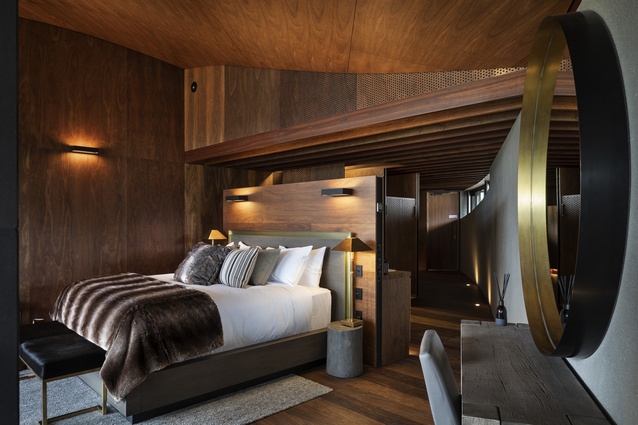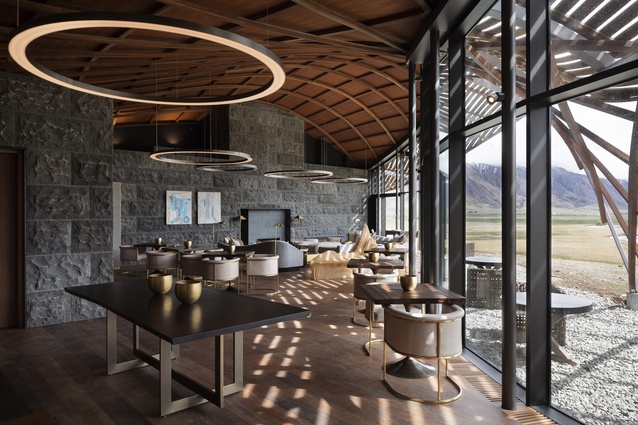Hot House: Lindis Lodge
This new, North Otago building is not exactly a house… yet the residential world can learn a lot from the luxury lodge’s ‘blend into nature’ attitude towards the breathtaking landscape that surrounds it.
This South Island building undulates, flows and resurfaces from the depths of its surrounding hill. Against the idyllic backdrop of the Huxley Range, it becomes almost invisible, camouflaged in part by its rolling hill shape and by the timber that forms its impressive lamella, gridshell roof. The brown tones of its spotted gum complement the grasslands and tussocks that surround it. The arms of the Ahuriri River seem to ebb as a continuation of the building’s curvature.
Its designer, Christopher Kelly, founding principal of the Wellington-based firm Architecture Workshop, has previously worked with iconic Italian architect Renzo Piano and it is not hard to see some congruence. Piano’s Zentrum Paul Klee in Switzerland and the Kansai International Airport in Japan each share some form of exposed, curved roof structure and a similar approach to the surrounding topography. Yet this building’s design is entirely of this land.
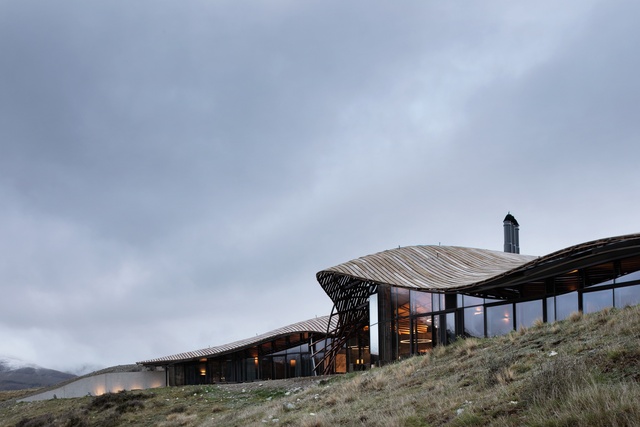
Within this stunning structure resides The Lindis, a new, five-bedroomed luxury lodge that, in its aesthetic, is part wilderness accommodation, part flamboyant residence. It is a contemporary, sculptural take on the hunting lodge typology.
While still traditionalist in its colour palette and interior materiality (such as the Edwin Lutyens-inspired bluestone fireplace), a geometric boldness makes it something entirely unexpected and vibrant. It is as if Taupō’s Poronui Lodge had been designed by an abstract painter rather than a classicist. Yet, where Poronui’s approach to the land is one of boldly inhabiting it (i.e. perched dramatically above the surrounding river), The Lindis is more about quiet cohabitation.
‘Unobtrusive’ is the operative word here. One of The Lindis’ most successful design moves is its ability to – as the oft-repeated phrase says – ‘blend into its surroundings’ in a way very few commercial buildings have done.
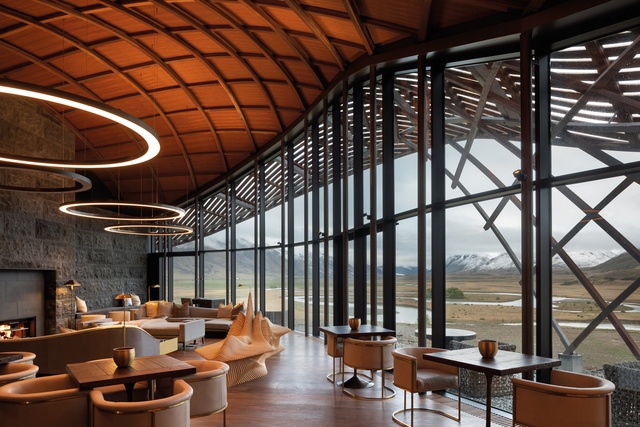
When asked about the architecture’s influence on the interior, Kelly talks of a gallery/entry where the plan is submerged in the ground and the windows are flush with the line of the land. The result, he says, is a roof form that “mimics the glacial moraine topography.”
In imitating the Huxley Range, The Lindis doesn’t simply take in the expansive alpine views; it forms a relationship with them – one that can only be described as symbiotic, respectful of the land and entirely luxurious.
This article first appeared in Urbis magazine.


